Sustainability/Green
Hyundai and Hydrogen
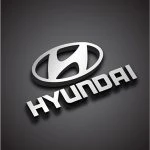
I’m showing my age a bit when I say that I can remember some of the earlier Hyundai cars – the Hyundai Pony and Hyundai Excel come to mind. Back in the 80s and early 90s, Hyundai cars were light, comfortable, and not really up to the same safety standards as the cars that were produced in other parts of the world. Nowadays, however, the story is completely different, and the South Korean automaker often tops crash safety tests with their vehicles, the vehicles are still comfortable, and the style and technology has won many awards. Hyundai has been always improving to the point where they are now a premium brand, very desirable, and leading the world on many fronts. Key new innovations from the Hyundai Motor Company (HMC) team are exciting and are part of Hyundai’s vision for building a cleaner, greener world that includes vehicles that no longer rely on fossil fuels.
Because of the past couple of years, where covid has taken the world’s centre stage, there has been a big shortage of semiconductors in the auto industry, to the point that some auto manufacturers have had to shut down. Semiconductors are used in the manufacture of electronic devices, including diodes, transistors, and integrated circuits. These devices have a wide application in anything electronic, including laptops, computers, appliances, and, of course, the modern automobile.
Like all vehicle manufacturers, HMC has been affected by the shortage and have had to temporarily suspend some of their factories. Despite the shortage, however, along with Toyota and Tesla, Hyundai is among a handful of automakers that actually increased their global sales despite the chip shortage.
However, Hyundai now plans to develop and build its own semiconductors so that they are not so reliant on chipmakers from other corners of the globe. Hyundai wants to make sure it has a steady supply of semiconductors for their projects on-and-into the future by making its own. It will be the parts and service arm for Hyundai, Kia and Genesis who would play a key role in the in-house development. Stockpiling the electronic chips would be important for Hyundai, so that when other global crisis occur, they will then be in a better position to weather the storm. Toyota and Tesla have already had stockpile contingency plans in place for some time, which has ensured that they fared well during covid.
Hyundai and Hydrogen
Hyundai are part of the Hydrogen Heavy Duty Vehicle Industry Group – comprised of hydrogen industry leaders Air Liquide, Hyundai, Nel Hydrogen, Nikola Corporation, Shell and Toyota. This Group has signed agreements with Tatsuno Corporation and Transfer Oil S.p.A. to industrialize globally-standard 70 MPa hydrogen heavy-duty vehicle high-flow (H70HF) fuelling hardware componentry. But, also, in Incheon, which is just west of Seoul, and in Ulsan, production plants will begin producing the hardware in the 2nd half of 2023 with an annual capacity of 100,000 hydrogen fuel cell systems.
South Korea’s influence on core Hydrogen components will see it as the world’s largest fuel cell production capacity, which will also help the HMC to diversify their business and tap into construction machinery and logistics equipment.
EVs might be the big talking point for some, but it is hydrogen that is the dark horse in the clean-green race. These two new fuel cell plants in Korea will accelerate the hydrogen economy and secure broader global market dominance. I reckon that Australia could be a hub for Hydrogen in the Pacific, don’t you think?
Hyundai’s wide-ranging hydrogen revolution accelerates with the showing of their 500 kW Vision FK sports car prototype and the e-Bogie autonomous commercial transport vehicles. HMG recently announced that it will launch next-generation hydrogen fuel-cell power units in 2023 that will double the power output, halve the cost, and reduce package size by 30%, when compared to current systems. Hyundai has a plan to offer “hydrogen for all” by 2040.
Hyundai’s Hydrogen Timeframe
In case you were not already aware, HMG is the parent of Hyundai, Kia and Genesis. By 2028, HMG says it will have applied fuel-cell systems to all of its heavy commercial vehicle models, including large trucks, significantly reducing transport-related CO2 emissions.
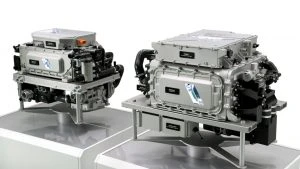
Hydrogen Fuel Cells
By 2030, Fuel-Cell Electric Vehicles (FCEV) will have achieved price parity with Battery Electric Vehicles (BEV), HMG says. And by 2040, HMG expects hydrogen to be available for everyone, for all vehicle types, and globally, triggering a lifestyle revolution.
Models for the Future
The Vision FK sports car is a 500 kW, hydrogen-powered high-performance prototype coupe that is capable of accelerating from 0-100 km/h in less than 4 seconds, while still offering a range of 600 km between top ups. The Vision FK’s fuel cell unit carries N Performance branding, suggesting that it would be a future Hyundai N model rather than a luxury-focused Genesis. HMG’s head of R&D, Albert Biermann, would not be drawn on when the Vision FK would go from prototype to production, but he did confirm that the next-generation Nexo fuel-cell SUV will launch “in the second half of 2023 followed by a Staria” The Staria is a people mover recently launched in Australia. “We are also working, of course, on fuel-cell cars for Kia and Genesis. That will take a little longer time. After 2025 you can expect further fuel cell applications.”
The e-Bogie commercial application is a fuel-cell-powered autonomous trailer that could revolutionise commercial transportation. Biermann also stated, “We are working full throttle on commercial [first] because that is the most effective way to avoid CO2. We are putting a lot of focus on fuel cells, not only for passenger cars but also for commercial vehicles.”
HMG’s Chairman, Euisun Chung, is even more emphatic about the significance of hydrogen fuel cell applications toward a sustainable future. “This may be the last train to a Hydrogen Society, and time is running out. Hydrogen is the most powerful and pragmatic solution to overcoming environmental challenges. Hydrogen mobility will accelerate human progress.”
He went on to say that Australia may have a role to play. “We know Australia is a country with vast and abundant renewable energy. We are exploring business opportunities in Australia with our partners. Our goal is to build a sustainable ecosystem for [a] global hydrogen society.”
He also said that, “We will not immediately phase out internal combustion engines (ICE) commercial vehicles, but we are not starting any new developments of ICE. No new models and no new platforms. Everything will go forward with BEVs and FCEVs.”
Interestingly, according to Hyundai’s head of fuel cell development, Mr Saehoon Kim, FCEV technology has one huge advantage over BEVs: “The main problem with [a] BEV is the scalability of batteries. For a small EV it’s okay, but for commercial large scale [operation] the question immediately is …. How are we going to stack all these batteries with the heavy weight, and who is going to be happy with the low range? So, in this case fuel cell fits perfectly.”
Hyundai’s heavy commercial fuel cell program is already well advanced. In mid-2020, 45 Hyundai Xcient fuel cell trucks began commercial operation in Switzerland. Biermann stated that the trucks covered 210,000 kilometres per month and have saved 130 tonnes of CO2 emissions every month in operation.
The key to Hyundai’s commercial strategy is its third-generation fuel-cell system, which is in the final stages of development. Hyundai expects to launch two units in 2023, one producing 100 kW for passenger vehicles and SUVs (including the next Nexo and Staria FCEVs), and a 200 kW unit for commercial applications. It has been said that by using two fuel-cell systems for trucks Hyundai can provide around 350 kW, which is equivalent to the power of current diesel engines used in trucking logistics.
This is all very exciting news and one that I have welcomed hearing. I’m a fan of the new hydrogen fuel-celled vehicle technology moving forward. This is Hyundai at its best, and we can only continue to watch this space.
Current Hyundai achievements:
The current ICE Hyundai i20 N has been crowned champion of Top Gear’s Speed Week. The 26 fastest cars in the world participated in Top Gear’s Speed Week 2021. It was the Hyundai· i20 N’s sharp handling and everyday usability that stood out to those in the Top Gear team.
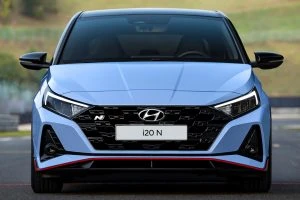
Hyundai i20N
Most Reliable Cars in 2021
How reliable a car is directly correlates with our ownership satisfaction rating, right? So, if we own a car that is always needing something fixed or repaired to make it properly functional, our contentment levels will be lower than if our car was reliable all or at least most of the time. It won’t take long for an unreliable car to start to irk us. Reliability is always a black and white area when it comes to car ownership satisfaction.
What car? has recently published their survey findings for 2021. They questioned more than 16,000 people across the UK who owned a car no older than 5 years old, and this is the results that show which cars and brands are the most reliable, and which ones are not. Is it possible that the more reliable a car is, the more green and sustainable the car is?
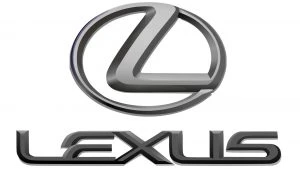
First place goes to Lexus who claims the top spot as the most dependable brand of car you can buy. Lexus cars suffer from very few faults. The Lexus NX SUV is the highest-rated hybrid you can buy.

Second place brand is Dacia, which is considered to be a budget brand. Here is a prime example of reliability and low cost going hand in hand. Dacia’s star performer is the previous generation Dacia Sandero.
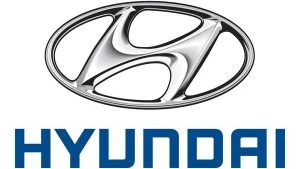
Hyundai takes the bronze, where the previous generation Hyundai i10, the larger i20, and the current Hyundai i30 being standouts. It was revealed that the problem areas included the brakes and gearbox, however the brand’s 5-year unlimited km warranty meant that most problems were fixed for free.
Suzuki
Suzuki takes fourth place for brand reliability; an excellent result. The little Suzuki Swift is the third most reliable car – a star performer for Suzuki.
Mini
Mini cars are generally pretty reliable cars. Mini’s Countryman scored well in the small SUV class. Mini’s little Hatchback is the sixth most reliable small car overall – a great result.
Toyota
Toyota has long been an impressively reliable brand, though it’s slipped slightly from third place last year.
Mitsubishi
Mitsubishi ranked 7th, their place unchanged from last year. The Mitsubishi Eclipse Cross is the most reliable family SUV on the market, boasting a 100% reliability score!
Mazda
Eighth place goes to the Mazda brand. Mazda highlights include the CX-3 (a very reliable small SUV), the CX-5 (petrol version), and the MX-5 sports car.
Kia
Star performers for Kia are the XCeed and Ceed family cars, which are among the most reliable in their class, while the Kia Optima is the second-most reliable executive car. Kia’s affordable E-Niro is the third most reliable EV.
MG
MG is the brand that takes out 10th spot. The classy MG ZS EV is the second-most reliable EV in the survey.
11) Citroen – Citroen’s C3 Aircross is the third most reliable small SUV.
12) Skoda – Skoda’s Superb is the most reliable executive car.
13) BMW – BMW’s previous model 1 Series is the most reliable family car. The BMW 5 Series is the most reliable luxury car. The BMW 3 Series also ranks 3rd in the executive class. Current BMW Hybrids are not quite so reliable.
14) Honda – The previous model Jazz was fifth in its class, while the HR-V is the most reliable small SUV.
15) Tesla – the Tesla Model 3 ranked 5th in the EV class.
16) Renault
17) Seat
18) Audi – Audi’s TT is the number one sports car for reliability.
19) Volvo
20) Volkswagen
Jaguar, Mercedes Benz, Peugeot, Vauxhall, Porsche, Alfa Romeo, Ford, Nissan, Land Rover, and then Fiat takes out 30th spot.
Of the last 10:
Porshce’s Macan took 1st place for the luxury SUV class.
Nissan’s LEAF is 1st for the most reliable EV.
Ford Movements
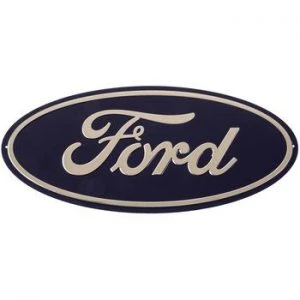
Hot off the Press News has Ford investing big money in EV production. All up, Ford and a South Korean supplier will spend $11.4 billion US on Ford’s EV production and expansion. Ford hopes this spend will enable them to produce more than one million EVs per year in the second half of this decade. The buzz words used in new and future cars include the term electric vehicles or EVs. Established automakers like Ford are racing to try and close the gap on Tesla’s EV lead. As you may be aware, Tesla produces a range of EVs, and Tesla are currently on the way to selling more than 800,000 electric cars this year. Tesla is currently the most valuable automaker in the world, with a market capitalization of nearly $800 billion US. Ford’s market value is $56 billion US.

Ford F-150 Lightening
Ford’s big spend will be its 2nd biggest spend in its history. Under the climate change banner and the Biden government, this latest US multibillion-dollar move to quickly transfer production plants to EV production is seen as a fast track phasing out of gasoline-powered cars and trucks as part of the global push to combat climate change. I won’t debate the science here.
Ford is to build 2 battery plants in Kentucky and 1 in Tennessee under the joint venture with its main battery cell supplier, SK Innovation of South Korea. In addition, Ford will build an assembly plant at the Tennessee location to churn out EV trucks. Ford will invest $7 billion and SK Innovation $4.4 billion, the companies have said. Ford expects electric vehicle models to make up 40% of their vehicle production by 2030. That’s only a little over 8 years away!
Ford’s new truck plant and battery factory in Tennessee is likely to be the place that will produce a new battery-powered Ford F-Series pickup truck, this following the previously announced F-150 Lightning pick up truck. I have to say that the F-150 Lightening is an impressive beast! Ford has said a mix of both the public and businesses had already placed 150,000 reservations for purchasing the F-150 Lightning.
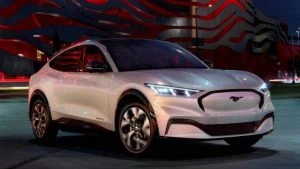
Ford Mustang Mach-E
Also this year, Ford began selling the Mustang Mach-E, which has taken a sizable market share from Tesla. Ford also plans to add an EV delivery van into the mix by the end of the year. Then, in early 2022, the electric F-150 Lightning will roll out of their showrooms and silently onto the tarmac.
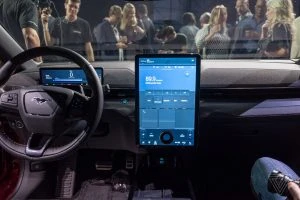
Ford Mustang Mach-E
Mr. Jim Farley, Ford Motor’s president and CEO, has recently said that making electrical vehicles affordable should be among the top priorities for automakers, so that the average vehicle-buyer can purchase one. This is good news, as a new EV is well out of most people’s budget.
He also made a couple of rather poignant comments: one on a key issue on questioning how EV production will impact labour/jobs (a subject rather close to home with our relatively recent Ford and Holden closures), and the other on materials. So, apparently, it costs 30% less to manufacture the Ford electrical vehicles. This will definitely affect production rates and employment long term. Then there is also the issue of battery supply and the rare minerals (i.e., lithium, cobalt) needed to power them, said Farley. Mr Farley stated, “We have to bring battery production here, but the supply chain has to go all the way to the mines. That’s where the real cost is, and people in the U.S. don’t want mining in their neighbourhoods. So, are we going to import lithium and pull cobalt from nation-states that have child labour and all sorts of corruption, or are we going to get serious about mining? … We have to solve these things and we don’t have much time.”
Here in Australia, we haven’t jumped on the EV wagon just yet, and if we are going too, then there is so much infrastructure that will be needed to be implemented before owning an EV becomes a viable option for people like me. Even the thought of the costs involved in getting the right infrastructure is eyewatering, and, like most impatient home renovators and idealistic politicians, the job must be done yesterday! The hard working folk pay for it, of course!
There seems little patience on offer by many governments and climate change activists for making the move to EVs (and other new transportation technology like an EV repower on your existing car) a more balanced and delicate affair. For now, owning an EV is very much for the elite, so Farley is on the right track when he says that the cost of EV ownership must be addressed very quickly.
Ford still has many plants throughout the U.S. However, like other big automotive manufacturers, Ford also has locations right around the world. Ford has many production plants scattered about the globe, and these include assembly plants, engine plants, forging plants, stamping plants and transmission plants. Here, in Australia, Ford still has special engine production and stamping plants.
On a more local note, Ford has a new feature called ‘FordPass’ offered on all their new models sold in Australia. FordPass has a few systems worthy of a mention that include:
Remote Start+, where minutes before leaving, you can start your connected vehicle’s engine from your mobile device in order to heat or cool the cabin using the last known climate control setting.
Vehicle Status, where you can check key variables such as fuel level and your odometer on the FordPass App to help plan your journey.
Remote Lock/Unlock, where, conveniently, you can use your mobile device to make sure the car doors are locked or unlocked without being anywhere near your vehicle. If only it could do that for my house front door!
Vehicle Locator, where you can check your vehicle’s exact location in the FordPass App, which is particularly useful if you share your vehicle with one or more members of your household or if you have forgotten where you parked it. However, if you’ve forgotten where you’ve parked it, then maybe you better get breath tested!
Vehicle Health Alerts, where the FordPass App sends Vehicle Health Alerts directly to your mobile device, pre-empting service needs and general maintenance such as low washer fluid.
Live Traffic, where this feature enhances your SYNC 3 Navigation system by delivering up-to-date traffic updates. This technology allows you to adjust your recommended route based on the traffic conditions, helping you to arrive more relaxed and on time.
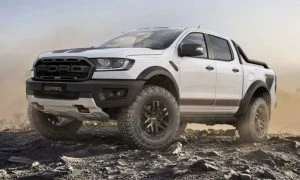
Ford Ranger Special Ediiton
In this second half of 2021, Ford Australia offer a nice broad range of vehicles that include the Puma, Escape and Everest SUVs; the Ford Focus car; the Ford Ranger Ute; the Transit Commercial range that has custom vehicles, vans, buses and cab-chassis models; the Ford Performance range that includes the Fiesta and Focus ST, the Focus ST-3, the Ranger Raptor, the Mustang and Mustang Mach-1; and the Special Edition Rangers and Everests.
It is good to see Ford keeping pace with any EV and hybrid automotive technology and movements; though at what societal and environmental cost? New Ford vehicles are good, and Ford offers a very complete package for all new vehicles in the Ford range. Once you’ve driven a Ford, its not so easy to change out of the brand come new car buying territory.
Classic Citroen
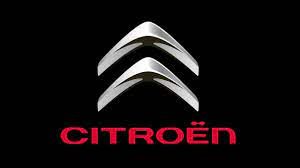
As mentioned in a more recent blog, Stellantis is official: PSA and FCA have merged under the name Stellantis. The name Stellantis originates from the Latin verb “stello” which means “to brighten with stars”. Car maker, Stellantis, now has 14 car brands under its wing, and they include: Abarth, Alfa Romeo, Chrysler, Citroen, Dodge, DS Automobiles, Fiat, Jeep, Lancia, Maserati, Opel, Peugeot, Ram, and Vauxhall. As far as its size goes, Stellantis is now the 4th-largest carmaker in the world, behind Toyota, VW Group, and the Renault-Mitsubishi-Nissan Alliance.
As you might have noticed, one of the 14 car brands is Citroen. Stellantis is planning to launch a new model under the Citroen brand for India and Latin America in 2022. The idea is for Stellantis to push outside the boundaries of its conventional European sales territory and branch further into emerging markets where it has had much less exposure.
Citroen left India in the 1930s, so some water has certainly past under the bridge since then. At a time when some other foreign carmakers are leaving India after struggling to make a profit there, Stellantis is seizing an opportunity with its Citroen-based products and heading straight on in. The company recently said it plans to produce a new version of the Citroen C3, which is commonly a city car in Europe, will be launched into India and Latin America in the second half of 2022. The car will be produced in India through a joint venture with CK Birla, and in Brazil. It is likely to be the first of 3 models aimed primarily for India and Latin America – these 3 models being produced over the next 3 years. By 2030, Stellantis expects India to become the world’s 3rd biggest car market after China and the U.S.
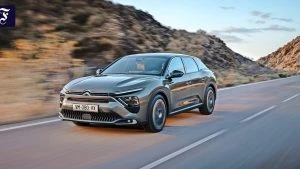
Citroen C5 X
However, Stellantis isn’t running away from Europe car markets anytime soon. It is well-known that the big German brands are dominating the midsize car segment in Europe, however Stellantis’s European focus is ramping up. Following the Peugeot 508 and glorious Citroen DS9, Citroen has a new flagship model that they want to put against the classy Mercedes E-Class, BMW 5 Series, and Audi A6 models. What is exciting is that the new Citroen C5 X will be a car that is a bit sedan, a bit wagon and a bit SUV in its design. The relatively flat roofline has a bit of sedan in its lines. The drawn-out rear-end brings the station wagon style, and then the tall ride height is more SUV – reminiscent of the C5 Aircross. At 4805 mm long, 1865 mm wide and 1485 mm tall, the new Citroen C5 X is smaller than its potential German rivals. It offers 545 litres of boot space behind the rear seats, which can be expanded to 1640 litres after the rear seats have been folded flat.
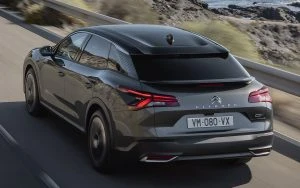
Citroen C5 X
It has to be said that the new Citroen C5 X boasts a quirky exterior that takes after the 2016 Cxperience concept. Its interior will be loaded with technology – all the very best tech that Citroen has to offer. A 12-inch touchscreen for infotainment, a large head-up display with support for augmented reality, a fully digital driver’s display, separate physical controls for the climate-control settings, sumptuous seating, and superior ride quality and comfort are just some of the features of the soon-to-be available Citroen C5 X will provide.
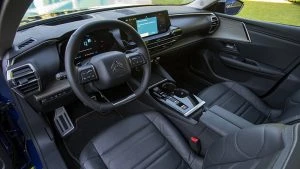
Citroen C5 X
Speaking of Citroen ride quality, the new Citroen C5 X flagship will come with the patented Citroen Advanced Comfort suspension, with the plug-in hybrid version making comfort even further advanced by featuring an active suspension. It boasts what the French automaker refers to as Progressive Hydraulic Cushioning, which when combined with exceptionally comfy seats, it should enable a silky-smooth ride even on bumpy surfaces – all in legendary Citroen fashion.
A variety of petrol-fed engines are planned; however, Citroen highlights the plug-in hybrid powertrain with 168 kW and more than 50 km of electric range as a special model to take on the gradual change to hybrid and EV technology. The Citroen C5 X PHEV model will be able to travel at speeds of up to 135 km/h in full electric mode.
The brand-new Citroen C5 X, made under the Steallantis name, will go on sale in Europe in the second half of 2022. Let’s hope that we see it as part of Citroen Australia’s line-up, too. With Australia’s growing love of the SUV, it would seem a logical model to bring over here…
For something a little different!
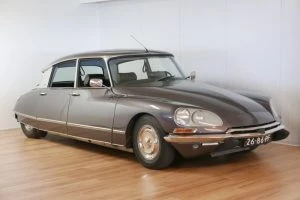
Citroen DS 1970
The 1955–1975 Citroen DS is still regarded as one of the most unique and interesting cars to have ever been made. The idea of retrofitting one of these to modern electric propulsion would be in the spirit of all things Citroen. A company known as ‘Electrogenic’ decided to reinvent the Citroen DS model with a battery-powered conversion.
The Oxford-based company retained the original car’s aerodynamic body but swapped the 2.0-liter petrol-fed engine for a brushless electric motor that produces 89 kW of power and 235 Nm of instant torque – a rather meaty performance upgrade. Interestingly, the power is delivered to the front wheels through the car’s original manual gearbox.
Providing the electric energy for the powertrain is a 48.5-kWh battery pack that is housed within the DS’s body. Electrogenic stated a real-world driving range of about 225 km per charge was doable. A 29-kW charger will refill the batteries to full capacity in about two hours. If the customer wanted a larger battery for a higher range between charges, it can be provided in a combination with a more powerful charger.
One of the fine attributes of the old Citroen DS was its silky-smooth hydro-pneumatic suspension. Electrogenic has also improved the hydro-pneumatic system by replacing the standard mechanical pump with an electric pump, which is more silent and delivers a more sophisticated ride than the original.
From the outside, the only visual differences between the original DS and the electric-powered conversion are the lack of exhaust pipes and the subtle but distinctive “DS EV electronique” decal on the boot.
Steve Drummond, director of Electrogenic, says that “Repowering classic cars with all-electric drive brings a number of benefits, from the ease of use to reliability and performance gains”. Of course, the quiet EV function brings out the best in old-timer classics.